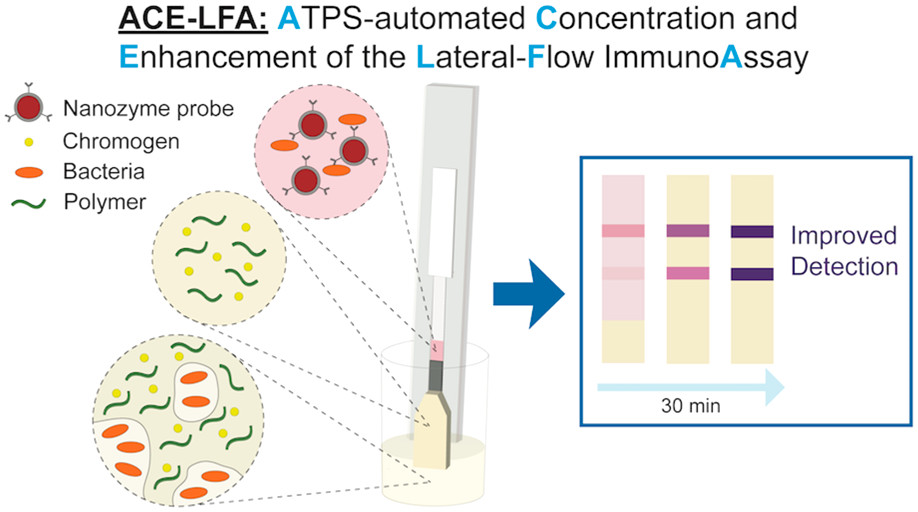Automated Preconcentration, Capture, and Nanozyme Enhancement
Infectious diseases remain one of the leading causes of deaths in developing countries because of a lack of basic sanitation, healthcare clinics, and centralized laboratories. Paper-based rapid diagnostic tests, such as the lateral-flow immunoassay (LFA), provide a promising alternative to the traditional laboratory-based tests; however, they typically suffer from having a poor sensitivity. Biomarker preconcentration and signal enhancement are two common methods to improve the sensitivity of paper-based assays. While effective, these methods often require multiple liquid handling steps which are not ideal for use by untrained personnel in a point-of-care setting. Our lab previously discovered the phenomenon of an aqueous two-phase system (ATPS) separating on paper, which allowed for the seamless integration of concentration and detection of biomarkers on the LFA. In this work, we have extended the functionality of an ATPS separating on paper to automate the sequential delivery of signal enhancement reagents in addition to concentrating biomarkers. The timing of reagent delivery was controlled by changing the initial composition of the ATPS. We applied this technology to automate biomarker concentration and nanozyme signal enhancement on the LFA, resulting in a 30-fold improvement in detection limit over the conventional LFA when detecting Escherichia coli, all while maintaining a single application step.
